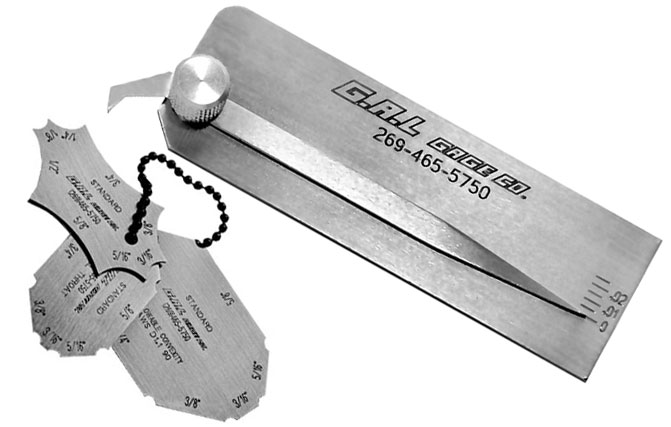How to Accomplish Precision with Gauge Fillet Welds in Your Jobs
How to Accomplish Precision with Gauge Fillet Welds in Your Jobs
Blog Article
Fillet Weld Design Techniques: Maximizing Joint Efficiency and Visual Appeal for Structural Stability
In the world of architectural engineering and construction, the importance of fillet weld design approaches can not be overemphasized. By carefully considering factors such as weld account optimization, material option, joint prep work techniques, welding procedure effectiveness, and visual improvement fabricators, approaches and engineers can accomplish an unified balance in between performance and look in their welded structures.
Weld Profile Optimization


Accomplishing an optimal weld account entails a thorough factor to consider of factors such as product density, joint configuration, welding position, and wanted welding rate. Furthermore, the selection of appropriate welding parameters, such as voltage, existing, and take a trip rate, is essential in controlling the form and measurements of the fillet weld. Utilizing innovative welding methods, such as pulse welding or robotic welding, can additionally fine-tune the weld account to satisfy specific layout requirements and top quality requirements.
In essence, weld account optimization is a fundamental facet of fillet weld design that straight affects the total performance and reliability of welded joints in architectural applications.
Material Option Considerations
When considering material option for fillet weld style, the compatibility of the base steels is a critical factor influencing the architectural integrity of the joint. It is vital to select products that not only weld with each other effectively however also possess comparable mechanical properties to make certain the load is uniformly dispersed between the base and the weld steels. Welding products with vastly different residential or commercial properties can cause concerns such as tension focus, early joint failing, or breaking.
Furthermore, the setting in which the bonded structure will operate need to be thought about when picking materials. Elements like rust resistance, temperature level variations, and direct exposure to chemicals can all influence the longevity and performance of the weld joint. By choosing materials that are appropriate for the designated application and atmosphere, the general durability and integrity of the welded joint can be substantially boosted.
Consequently, thorough consideration of material compatibility and environmental factors is paramount in guaranteeing the weld joint's strength, resilience, and total architectural stability.

Joint Preparation Techniques
Taking into consideration the critical duty product option plays in making sure the architectural honesty of fillet weld joints, it is necessary to apply precise joint prep work strategies that optimize the link in between the base metals. Joint preparation is a critical step that directly affects the top quality and strength of the weld. One essential strategy is the cleansing of base steels to remove any pollutants like corrosion, oil, or paint that can compromise the weld's stability. This can be attained via methods such as grinding, wire brushing, or chemical cleansing.
In addition, tack welding the elements in location before the last weld aids preserve alignment and decreases distortion throughout the welding procedure. By carefully following these joint prep work methods, welders can enhance find out here the overall efficiency and looks of fillet weld joints while making sure structural sturdiness.
Welding Process Effectiveness
Efficient welding processes are essential for accomplishing ideal performance and quality in fillet weld construction. Procedures like gas steel arc welding (GMAW) and flux-cored arc welding (FCAW) are typically utilized for fillet welds due to their convenience and speed.
Normal calibration of welding makers, examination of consumables, and maintenance of welding lanterns can stop downtime and remodel, eventually saving time and resources. Well-trained welders are more adept at adjusting parameters, repairing concerns, and preserving constant weld quality.
Visual Improvement Approaches
To optimize the quality of fillet weld construction, implementing visual improvement approaches can play a critical function in making certain precision and precision throughout the welding process. Aesthetic help such as weld dimension determines and multiplying lenses can assist in assessing weld profiles and dimensions accurately. By incorporating these aesthetic improvement approaches right into the welding procedure, welders can accomplish not only structurally sound fillet welds but also visually appealing outcomes that fulfill sector criteria.

Final Thought
In conclusion, maximizing fillet weld design includes careful consideration of weld account, material choice, joint prep work, welding procedure efficiency, and aesthetic improvement methods. By carrying out these strategies, architectural honesty can be improved while likewise attaining aesthetic charm. It is very important to focus on both efficiency and appearances in fillet weld design to guarantee check my source the general high quality and sturdiness of the joint.
By diligently considering aspects such as weld account optimization, product selection, joint prep work methods, welding process performance, and aesthetic improvement engineers, methods and producers can achieve a harmonious balance between functionality and look in their bonded frameworks.In the world of fillet weld style, enhancing the weld that site account plays an important function in making sure architectural stability and performance. The weld profile, which consists of the dimension and form of the weld cross-section, directly affects the distribution of stress and load-bearing ability within the joint. It is essential to pick products that not only weld with each other properly yet likewise possess similar mechanical properties to ensure the lots is uniformly distributed in between the base and the weld metals - Gauge Fillet Weld.In conclusion, maximizing fillet weld style involves careful factor to consider of weld profile, product choice, joint preparation, welding procedure effectiveness, and visual improvement techniques
Report this page